Let us guide you on this journey to uncover the different types of Japanese tea, and learn about their history, flavors, and the best ways to enjoy each of them.
In our exploration of the world of tea, one cannot overlook the rich and diverse culture of Japanese tea. Known for its intricate tea ceremonies and the health benefits associated with tea consumption, Japanese tea offers a wide array of flavors, colors, and aromas, delighting our senses and inviting us to dig deeper into its fascinating universe.
We might be familiar with some popular green tea varieties, such as sencha and matcha, but there are many other types of Japanese tea just waiting to be discovered. The art of tea production in Japan has been honed over centuries, focusing on the delicate balance of cultivation, harvesting, and processing, resulting in teas with special characteristics and noteworthy distinctions.
So grab your favorite teacup, and let’s embark together on this exciting adventure into this realm of nuanced and splendid brews.
Please note: This article contains affiliate links, meaning I may earn a commission if you make a purchase by clicking a link. Of course, this comes at no extra cost to you and helps me to keep offering solid information to readers.
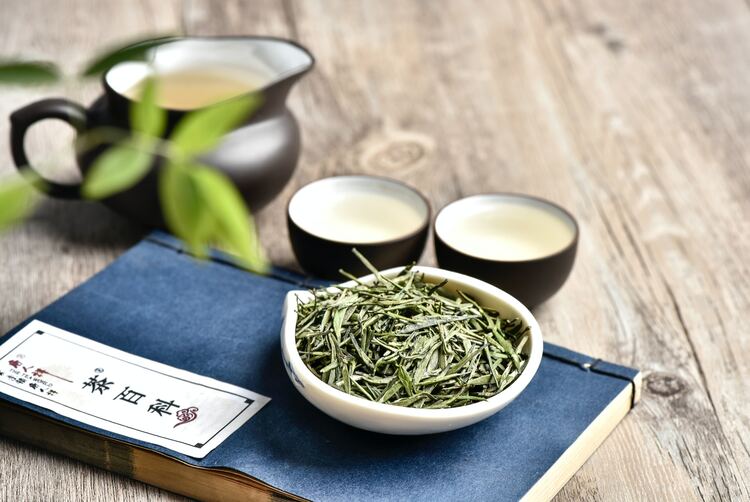
Types of Japanese Tea
We will start by exploring various types of Japanese tea that we think you’ll enjoy. These teas have unique flavors, health benefits, and cultural significance. We have organized these teas into categories to help you better understand and appreciate their subtleties.
Green Tea
Japanese green tea, known as ryokucha, is an umbrella term for several types of tea produced in Japan. These teas are picked, steamed, and processed to preserve their vibrant green color and fresh, grassy flavor.
Note the word “steamed” has been bolded in the paragraph above. This is because steaming tea leaves is one of the key elements that make the processing in Japan different from other tea-producing areas worldwide.
Keep in mind green tea is not oxidized. When tea leaves are picked, they start to turn dark since a chemical process where chlorophyll is broken down is triggered. This oxidation process can be stopped by applying heat.
In Japan, the heat is applied through steaming. Other tea-producing areas, like China, apply heat through pan-firing. That is why the green tea leaves produced in Japan tend to have a vivid green color.
Some popular varieties include:
- Matcha
- Sencha
- Gyokuro
- Bancha
- Hojicha
- Genmaicha
- Kukicha
Matcha
Matcha is a finely ground, powdered green tea that we enjoy for its vibrant green color and deep, earthy flavor. This tea has a long history in Japanese tea ceremonies and is becoming increasingly popular worldwide for its versatility in recipes and potential health benefits.
Sencha
Sencha is one of the most popular Japanese green teas, with its refreshing, slightly bitter taste. It is harvested during the first and second flushes of the tea plant (early spring and late spring harvests), resulting in a bright, vegetal flavor profile that we find both invigorating and calming. This is the most consumed tea in Japan.
Gyokuro
Gyokuro is a luxury green tea, shade-grown for approximately three weeks before harvest, leading to increased levels of chlorophyll and amino acids like L-theanine. This tea has a rich, savory taste that we describe as “umami,” making it a unique and premium brewing experience.
Bancha
Bancha is a more affordable green tea made from the larger, more mature leaves picked during the later harvesting season. It has a mild, slightly sweet taste and a lower caffeine content, making it an excellent option for those new to Japanese tea or seeking a gentle, everyday brew.
Hojicha
Hojicha sets itself apart from other green teas with its roasted, nutty flavor. The tea leaves are roasted at a high temperature, which reduces the caffeine content and imparts a comforting, toasty aroma. We find it an ideal tea for enjoying as a warm evening drink or introducing to tea enthusiasts who enjoy darker, more robust flavors.
Genmaicha
Genmaicha is made by blending green tea leaves with roasted brown rice., which gives the tea a toasty, nutty flavor and a slightly sweet aroma. The green tea leaves used in Genmaicha are typically of lower quality than those used in premium green teas, but they still provide a light and refreshing taste that balances well with the roasted rice.
Kukicha
Kukicha, or twig tea, is a unique blend of tea leaves and stems (twigs) that yields a sweet, slightly nutty taste. Its lower caffeine content and soothing flavor profile make it a favorite afternoon treat, perfect for when we crave a light and refreshing cup of tea.
Black Tea
Japan is known for its green tea production. It is not a major producer of black tea (known as Wakoucha) since its processing method is not commonly used in the country.
However, there is some limited production of black tea in Japan. A small number of tea growers have begun experimenting with black tea production, using unique techniques such as shading the tea bushes before harvest to create a distinct flavor profile. These teas are often marketed as specialty or artisanal products and are not widely available.
Herbal Teas
Japanese herbal teas, or “tisanes,” encompass various flavorful and aromatic beverages made from various plants, flowers, fruits, and herbs. These herbal teas are caffeine-free and often enjoyed for their soothing properties, unique flavors, and potential health benefits. Here are some notable Japanese herbal teas:
Mugicha (Barley Tea)
Mugicha is a popular caffeine-free Japanese tea made from roasted barley grains. It’s a common summertime beverage, enjoyed both hot and cold. Mugicha has a toasty, nutty flavor and a slightly sweet aroma. It is known for its refreshing properties and is believed to help with digestion and cooling the body in hot weather.
Sobacha (Buckwheat Tea)
Sobacha is made from roasted buckwheat kernels and is naturally caffeine-free. It has a nutty, earthy flavor and is often enjoyed for its soothing properties. Sobacha is rich in antioxidants and has been consumed in Japan for its potential health benefits, including aiding blood circulation and digestion.
Yomogi-cha (Mugwort Tea)
Yomogi-cha is an herbal tea made from the leaves of the mugwort plant. It has a distinct, slightly bitter flavor and a herbal aroma. Mugwort is believed to have various health benefits, and the tea is sometimes consumed to alleviate certain ailments.
Umeboshi Tea (Pickled Plum Tea)
Umeboshi tea is made by steeping pickled Japanese plums (umeboshi) in hot water. Umeboshi plums are known for their sour and salty flavor. The resulting tea is tangy and salty, making it a unique and acquired taste. Umeboshi tea is often consumed for its potential detoxifying and alkalizing properties.
Sakura-cha (Cherry Blossom Tea)
Sakura-cha is made from preserved cherry blossom petals. It carries the delicate floral aroma and subtle sweetness of cherry blossoms. This tea is often associated with springtime in Japan and is celebrated during the cherry blossom season. It’s not only enjoyed for its taste but also for the visual and aromatic experience it provides.
Shiso-cha (Perilla Tea)
Shiso-cha is made from the leaves of the shiso plant, also known as perilla. It has a distinct, refreshing taste with hints of mint and basil. Shiso leaves are rich in antioxidants and are thought to have various health-promoting properties. The tea is known for its bright color and is enjoyed both hot and cold.
Kombu-cha (Kelp Tea)
Kombu-cha is a type of broth or tea made by steeping kombu seaweed in water. It’s often used as a base for Japanese soups and dishes. Kombu-cha has a mild umami flavor and is rich in minerals. It’s considered a natural iodine source and is enjoyed for its potential nutritional value.
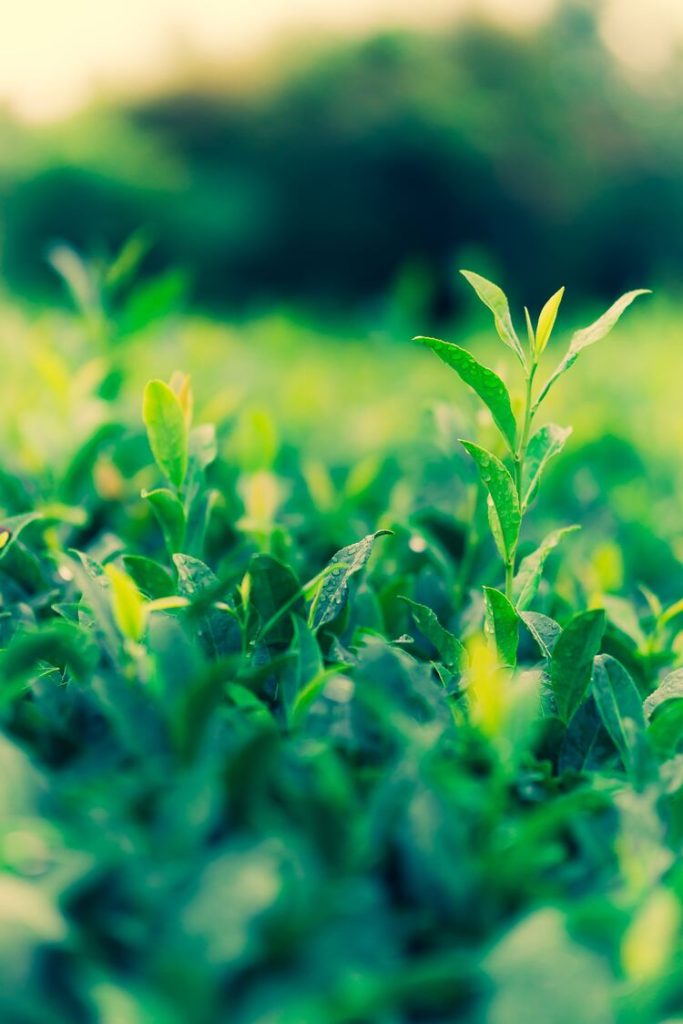
How Different Teas Are Made
It is time to discuss the process of making various types of Japanese teas, focusing on the steps of cultivation, harvesting, and processing.
Cultivation
Tea plants require suitable climates and soil conditions to thrive. In Japan, tea plants are grown in regions with mild temperatures and well-draining soil. To obtain distinct flavors, variations in cultivation methods are applied, such as shading the tea plants to enhance their umami flavor, which is prevalent in Gyokuro and Matcha teas. Sencha is grown in full sun (even though some varieties use the shading method).
Harvesting
The harvesting process greatly affects the tea’s quality and taste. In general, Japanese teas are harvested multiple times a year, with the first flush (early spring harvest)—also known as Ichibancha—being the most prized for its sweetness and freshness. The timing of the harvest also plays a significant role. For example:
- Sencha is harvested during the first flush.
- Bancha is harvested during the second or third flush.
- Hojicha is made from leaves harvested later in the season.
Processing
Processing methods vary depending on the type of tea being produced. We can categorize the processing into three main steps:
- Steaming: The freshly harvested leaves are steamed to preserve the green color and prevent oxidation. This short process is critical in the production of green tea.
- Rolling and Shaping: The steamed leaves are then rolled and shaped using traditional methods, with some teas taking on iconic needle-like shapes, such as Gyokuro and Sencha, while others, like Matcha, are ground into a fine powder.
- Drying and Firing: Finally, the rolled leaves are dried to reduce moisture and fired to enhance their flavor. This step of heating the tea leaves also contributes to the development of unique tastes for different tea varieties – for instance, the roasted flavor of Hojicha.
These distinct cultivation, harvesting, and processing techniques contribute to the unparalleled flavors found in various types of Japanese teas.
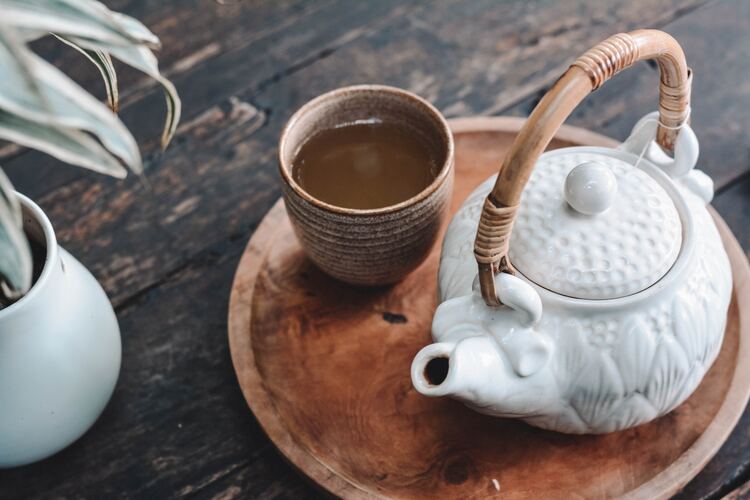
Tea Ceremony and Culture
In this section, we will explore the fascinating world of Japanese tea ceremonies and their significant impact on Japanese culture.
History of Tea Ceremony
The Japanese tea ceremony has a rich and intricate history that can be traced back to the 9th century. It was initially influenced by Chinese tea culture, but it has since evolved into a unique practice emphasizing mindfulness, simplicity, and harmony.
Throughout the centuries, tea ceremonies have been strongly connected to Zen Buddhism, and have been practiced not only for enjoyment but also as a form of meditation and a way to cultivate inner peace and tranquility.
Chado or The Way of Tea
Chado, also known as the Way of Tea, is the formalized practice of conducting a Japanese tea ceremony. This tradition involves carefully preparing and serving tea, as well as engaging in meaningful conversation with guests. To truly appreciate and understand Chado, we must immerse ourselves in the four principles that guide it:
- Harmony (和, Wa): Achieving balance with nature, people, and the tea itself.
- Respect (敬, Kei): Demonstrating genuine appreciation and consideration for all elements in the ceremony, from the tea to the guests.
- Purity (清, Sei): Cleansing the mind, body, and spirit to create a peaceful and untainted atmosphere.
- Tranquility (寂, Jaku): Experiencing a deep sense of calm and inner peace during the ceremony.
Incorporating these principles into our daily lives can help us cultivate a more mindful and balanced way of living, which is the essence of Chado.
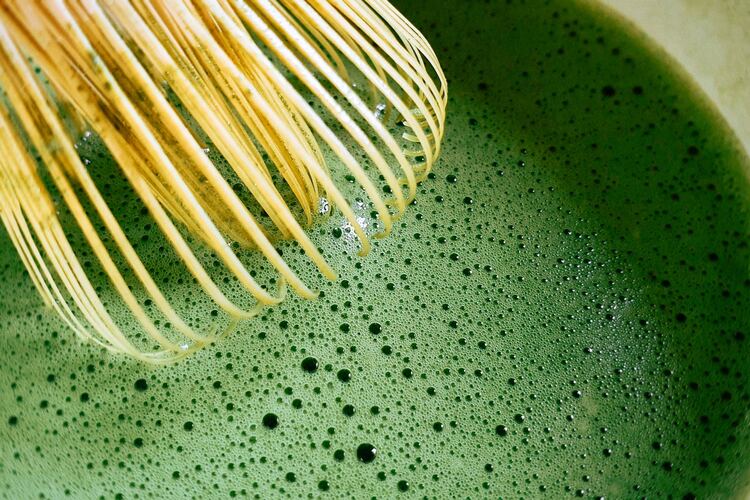
Health Benefits of Japanese Tea
We all know that tea has been praised for its health benefits, but there’s something particularly special about Japanese tea.
First and foremost, Japanese tea is full of antioxidants, particularly catechins. These powerful plant compounds help us fight free radicals and protect our cells from damage. This, in turn, can reduce the risk of chronic diseases, such as heart disease and cancer.
Another notable benefit is the presence of L-theanine, an amino acid that works wonders for our mental well-being. This compound promotes relaxation and reduces stress, meaning that a cup of Japanese tea might just be the perfect way for us to unwind after a long day. Furthermore, L-theanine also improves focus and concentration, making it a great aid for staying productive at work or school.
It’s worth mentioning that most Japanese teas are relatively low in caffeine compared to other types of tea, such as black or oolong. This means that we can enjoy the energy-boosting effects of tea without the risk of feeling jittery, anxious, or experiencing a caffeine crash later on.
Storing and Brewing Japanese Tea
In this section, we’ll provide some tips on how to properly store and brew Japanese tea to ensure it retains its flavor and aroma. We’ll also discuss storage tips and brewing techniques to get the best results every time.
Storage Tips
Proper storage of Japanese tea is essential to maintain its quality and taste. Here are some suggestions to keep your tea fresh:
- Always keep the tea in an airtight container. This will prevent it from absorbing odors and moisture from the surrounding environment.
- Store the container in a cool, dark place, away from direct sunlight and heat. Exposure to heat and sunlight can negatively impact the tea’s flavor.
- Use your tea within a reasonable time after opening the package. Generally, it should be consumed within a few months. However, this varies depending on the specific type of tea.
Brewing Techniques
To fully enjoy Japanese tea, it’s essential to follow proper brewing techniques. Here are some general guidelines:
| Tea Type | Water Temperature | Brewing Time |
| Sencha | 70-80°C (158-176°F) | 1-2 minutes |
| Gyokuro | 50-60°C (122-140°F) | 1.5-2 minutes |
| Genmaicha | 90-100°C (194-212°F) | 30 seconds to 1 minute |
| Hojicha | 90-100°C (194-212°F) | 30 seconds to 1 minute |
| Matcha | 80-90°C (176-194°F) | Whisk until frothy |
Remember that these are general guidelines, and it’s essential to adjust the brewing time and temperature depending on the specific tea you have. Most tea packages come with brewing instructions, so make sure to follow them for the best results.
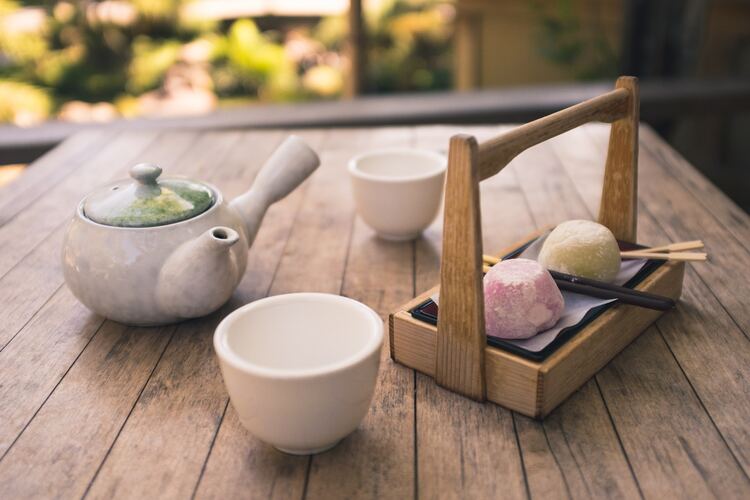
Types of Japanese Tea – Food Pairings
Pairing Japanese tea with food can enhance the flavor of both the tea and the dish, creating a delicious and enjoyable experience. Here are some food pairing ideas:
Sushi
Sushi and green tea are a classic pairing in Japan. The umami flavor of sushi complements the light and refreshing taste of tea, making it a perfect combination.
Tempura
Tempura is a popular Japanese dish consisting of battered and fried seafood or vegetables. The light and crispy texture of tempura goes well with the earthy flavor of green tea.
Rice Dishes
Green tea pairs well with rice-based dishes such as rice balls, porridge, and bowls. The mild taste of rice enhances the flavor of green tea, creating a subtle and enjoyable taste.
Soba Noodles
Soba noodles are a popular Japanese dish made from buckwheat flour. The nutty and earthy flavor of soba noodles complements the vegetal taste of green tea.
Japanese Sweets
Japanese sweets, also known as “wagashi,” are confectionery made from traditional ingredients such as sweet bean paste and mochi. The delicate and sweet flavor of wagashi goes well with the subtle and refreshing taste of green tea.
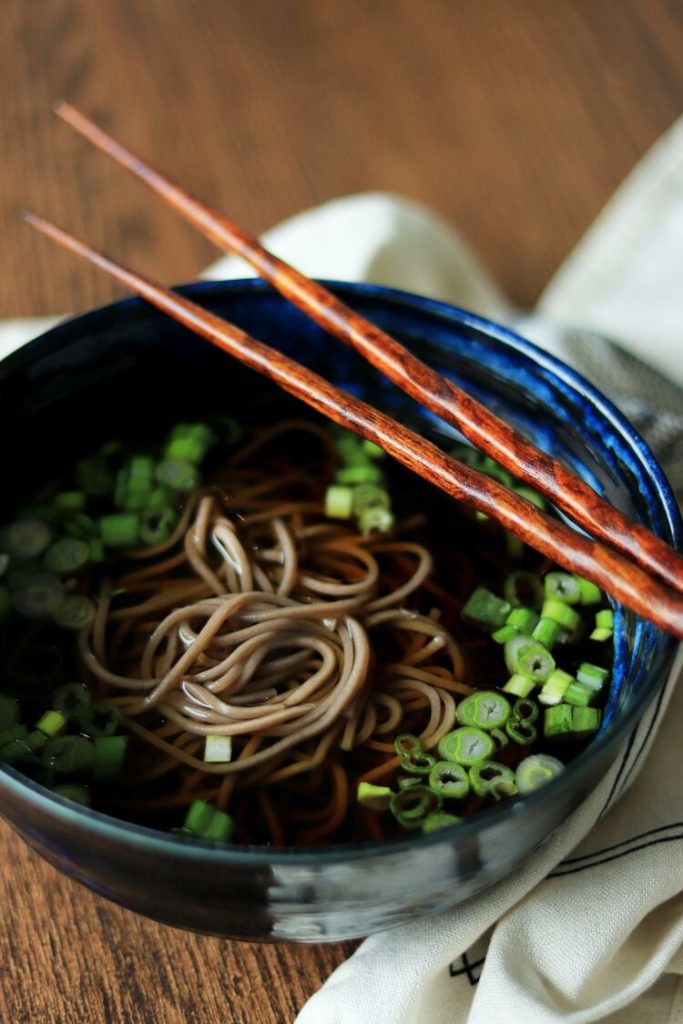
Japanese Green Tea Buying Recommendations
I recommend visiting a tea specialist to get the best quality Japanese tea (that fits your budget). In this way, you will get direct advice on what to buy and you may even be able to get a taste before making a decision.
If you are limited on time, here are some recommendations to start your tea journey (buy online):
Sencha
Uji-Kyoto Green Tea Leaves Sencha

Organic Japanese Sencha – First Harvest Saemidori Cultivar


Matcha

MATCHA DNA Certified Organic Matcha Green Tea Powder

Gyokuro


Bancha

Kukicha

Hojicha

I hope you have enjoyed learning about the different types of Japanese tea. Fascinating, right? Until the next one! Keep drinking tea!
What types of Japanese tea do you prefer?
More About Tea
What Does Green Tea Taste Like?
The Process of Making Green Tea